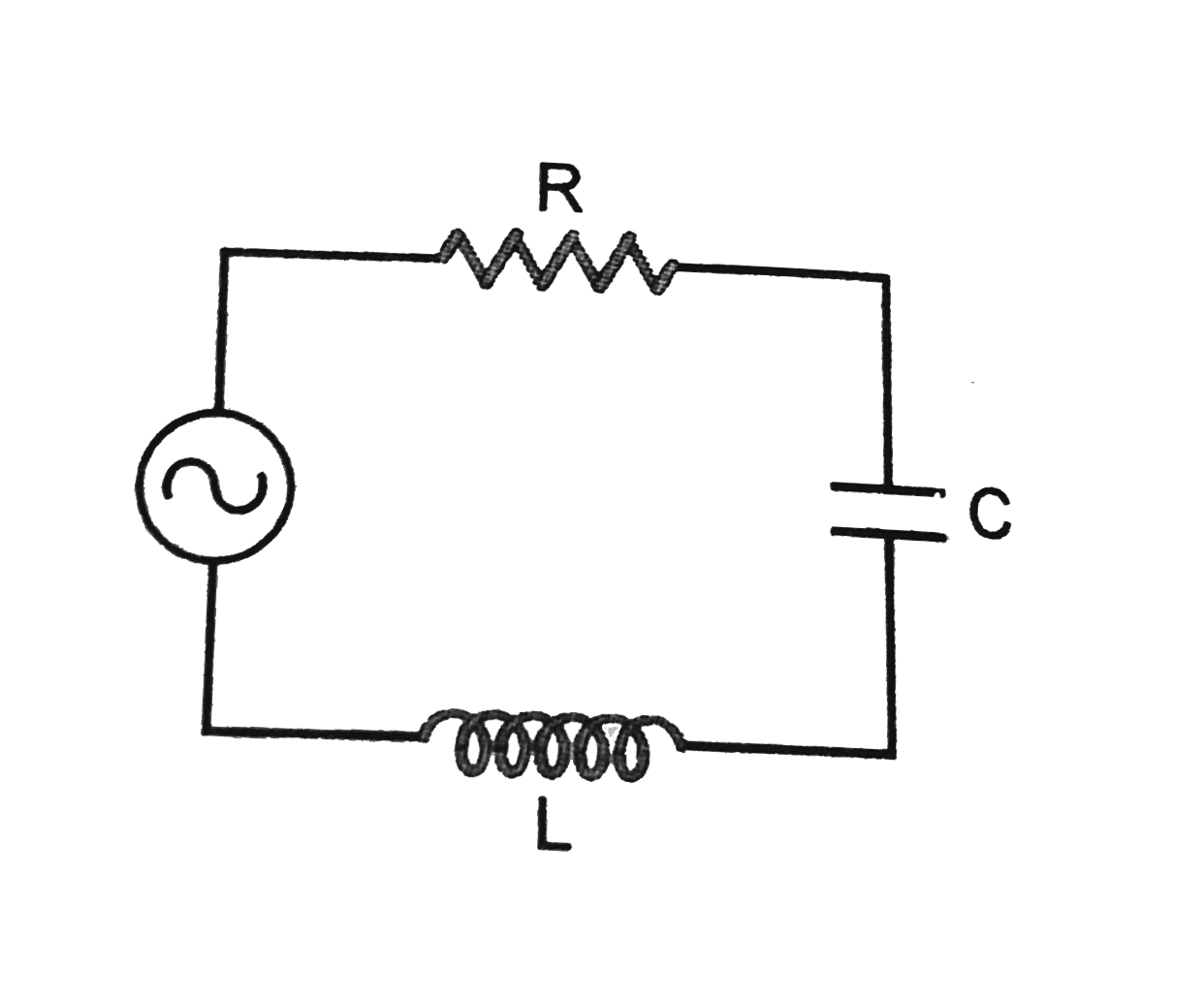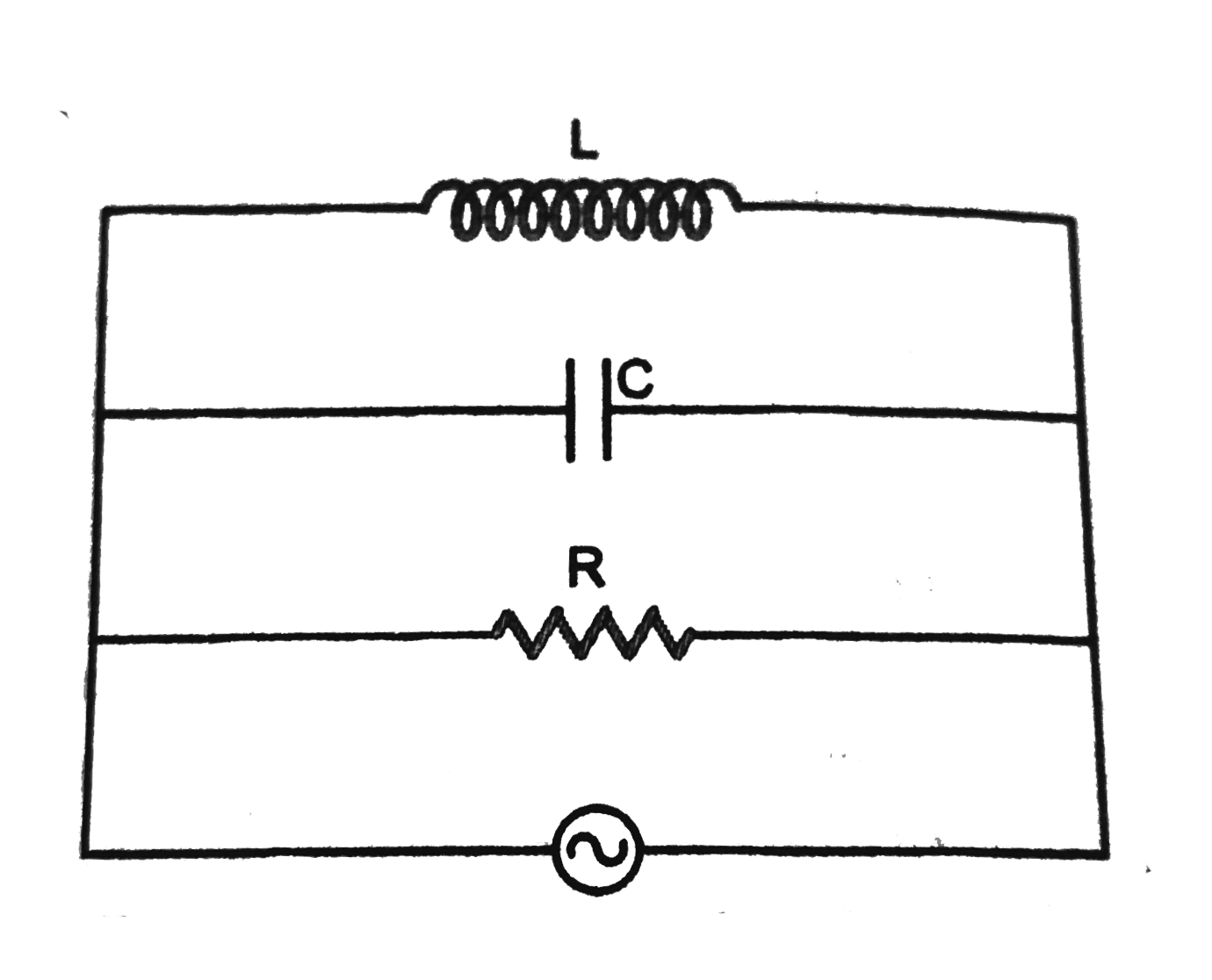Complete Solutions to Exercise of chapter ALTERNATING CURRENT of Class 12 book with complete answers and questions
| Class 12 | PHYSICS |
| Chapter | ALTERNATING CURRENT |
| NCERT | Exercise |
| Number Of Questions | 26 |
| Academic Year | 2023-24 |
A `100 Omega` resistor is connected to a 220 V, 50 Hz ac supply.
(a) What is the rms value of current in the circuit?
(b) What is the net power consumed over a full cycle?
View Solution(a) The peak voltag3e of an a.c. supply is 300 V. What is its r.m.s voltages?
(b) The r.m.s value of current in an ac circuit is 10 A. What is the peak current ?
View SolutionA 44 mH inductor is connected to 220 V, 50 Hz a.c. supply. Determine rms value of current in the circuit.
View SolutionA `60 mu F` capacitor is connected to a 110 V, 60 Hz a.c. supply Determine the r.m.s value of current in the circuit.
View SolutionIn Exercises 7.3 and 7.4, what is the net power absorbed by each circuit over a complete cycle. Explain your answer.
View SolutionObtain the resonant frequency `(omega_(r))` of a series LCR circuit withL = 2.0 H, C = 32 `muF` and R = 10 ohm. What is the Q value of this circuit ?
View SolutionA charged 30 `mu F` capacitor is connected to a 27 mH inductor. What is the angular frequency of free oscillations of the circuit ?
View SolutionSuppose the initial charge on the capactor in the above question is 6 mC. What is the total energy stored in the capactor intially ? What is the total energy at later time ?
View SolutionA series `LCR` circuit with `R = 20 Omega, L = 1.5 H` and `C = 35 mu F` is connected to a variable frequency `200 V` ac supply. When the frequency of the supply equals the natural frequency of the circuit, what is the average power in `kW` transferred to the circuit in one complete cycle?
View SolutionA radio can tune over the frequency range of a portion of MW broadcast band (800 kHz to 1200 kHz). If its LC circuit has an effective inductance of `200 mu H`, what must be the range of its variable capacitor ?
View SolutionA series LCR circuit connected to a variable frequency 230 V source has L = 5.0 H, `C = 80 mu F`, `R = 40 Omega`, Fig.
(a) Determine the source frequency which drives the circuit in resonance.
(b) Obtain the impedance of the circuit and amplitude of current at at resonating frequency.
(c ) Determine the r.m.s. potential drops acorss the three elements the circuits. Show that the potential drop acorss the LC combination is zero at the resonating frequecny.

View SolutionAn LC circuit contains a 20 mH inductor and a `50 mu F` capacitor with an initial charge of 10 mC. The resistance of the circuit is negligible. Let the instant the circuit is closed be t = 0.
(a) What is the total energy stored initially ? Is it conserved during the oscillalions?
(b) What is the natural frequency of the circuit?
(c ) At what time is the energy stored? (i) Completely electrical ? (ii) Completely magnetic ?
(d) At what time is the total energy shared equally between the inductor and the capacitor ?
(e) If a resistor is inserted in the circuit, how much energy is eventually dissipated as heat ?
View SolutionA coil of inductance `0.50H` and resistance `100 Omega` is connected to a `240V`, `50Hz` ac supply. What are the maximum current in the coil and the time lag between voltage maximum and current maximum?
View SolutionObtain the answers to (a) and (b) Q.13, if the circuit is connected to a high frequency supply (240 V , 10 kHz). Hence explain statement that at very high frequency. Inductor in circuit nearly amount to open circuit. How does an indcutor behave in a d.c. circuit after the steady state ?
View SolutionA `100muF` capacitor in series with a `40 Omega` resistor is connected to a `110V`, `60 HZ` supply. What is the time lag between current maximum and voltage maximum?
View SolutionObtain the answers to (a) and (b) in Q .15, if the circuit is connected to 110 V, 12 kHz supply. Hence explain the statement that a capacitor is a conductor at very high frequencies. Compare this behaviour with that of a capacitor in d.c. after the steady state.
View SolutionKeeping the source of frequency equal to the resonating frequency of the series LCR circuit, if the three elements L, C and R in are arranged in parallel , show that the total current in the parallel LCR circuit is a minimum at this frequency. Obtain the r.m.s. value of current in each brach of the circuit for the elements and source specified in for this frequency.

View SolutionA circuit containing an `80mH` inductor and a `60muF` capacitor in series is connected to a `230V-50Hz` Supply. The resistance in the circuit is negligible .
(a) Obtain the current amplitude and rms currents.
(b) Obtain the rms values of voltage across inductor and capacitor.
(c ) What is the average power transferred to the inductor and to the capacitor?
(d) What is the total power absorbed by the circuit?
View SolutionSuppose the circuit in Exercise 7.18 has a resistance of `15 Omega` Obtain the average power transferred to each element of the circuit, and the total power absorbed.
View SolutionA series LCR circuit with `L= 0.12H, C=480 nF,` and `R=23 Omega` is connected to a `230V` variable frequency supply.
(a) What is the source frequency for which current amplitude is maximum? Find this maximum value.
(b) What is the source frequency for which average power absorbed by the circuit is maximum? Obtain the value of maximum power.
(c ) For which frequencies of the source is the power transferred to the circuit half the power at resonant frequency?
(d) What is the Q-factor of the circuit?
View SolutionObtain the resonant frequency and Q-factor of a series LCR circuit with `L=3.0H, C=27muF, and R=7.4 Omega`. How will you improve the sharpness of resonance of the circuit by a factor of 2 by reducing its full width at half maximum?
View SolutionAnswer the following questions :
(a) In any a.c. circuit, is the applied instantaneous voltage equal to the algebraic sum of the instantaneous voltages acorss the series elements of the circuit ? Is the same true for r.m.s. voltage?
(b) A capacitor is used in the primary circuit of an induction coil.
(c ) An applied voltage signal consists of a superposition of a d.c. voltage and an a.c. voltage of high frequency. The circuit consists of an inductor and a capacitor in series. Show that the d.c. signal will appear across C and the a.c. signal will appear across L.
(d) A choke coil in series with a lamp is connected to a d.c. line. The lamp is seen to shine brightly. Insertion of an iron core in the choke causes no change in the lamp's brightness. Predict the corresponding observation if the connection is to an a.c. line.
(e) Why is choke coil needed in use of fluorescent tubes with ac mains ? Why can we not use an ordinary resistor instead of choke coil?
View SolutionA power transmission line feeds input power at 2300 V to a step down trnasformer with it primary windings having 4000 turns. What should be the number of turns in the seconday windings in order to get output power at 230 V?
View SolutionAt a hydroelectric power plant, the water pressure head is at a height of 300 m and the water flow available is `100 m^(3) s^(-1)`. If the turbine generator efficiency is 60%, estimate the electric power available from the plant `(g = 9.8 ms^(-2))`.
View SolutionA small town with a demand of 800 kW of electric power at 220 V is situated 15 km away from an electric plant generating power at 440 V. The resistance of the two line wires carrying power is `0.5 Omega` per km. The town gets power from the lines through a 4000-220 V step down transformer at a substation in the town.
(a) Estimate the line power loss in the form of heat.
(b) How much power must the plant supply. assuming there is negligible power loss due to leakage?
(c) Characterize the step up transformer at the plant.
View SolutionDo the same exercise as above with the replacement of the earlier transformer by a 40,000-220 V step-down transformer (Neglect, as before, leakage losses though this may not be a good assumption any longer because of the very high voltage transmission involved). Hence, explain why high voltage transmission is preferred?
View Solution
Exercise questions and complete solutions for chapter ALTERNATING CURRENT of NCERT PHYSICS(ENGLISH) of Class 12